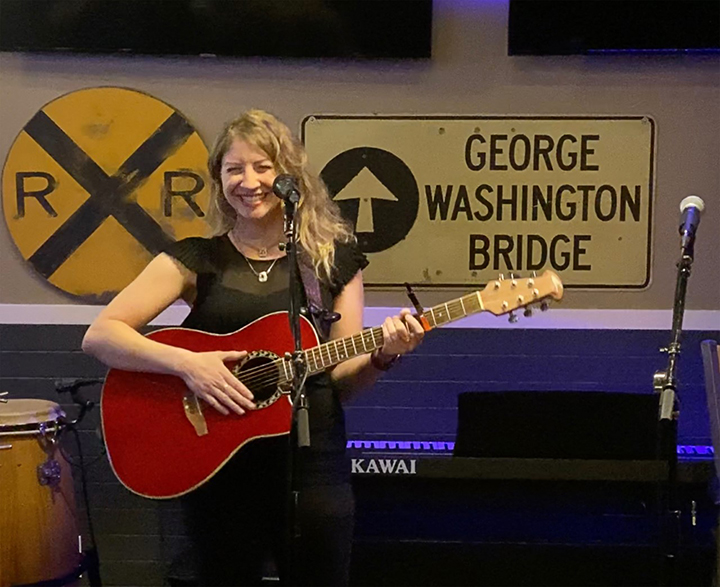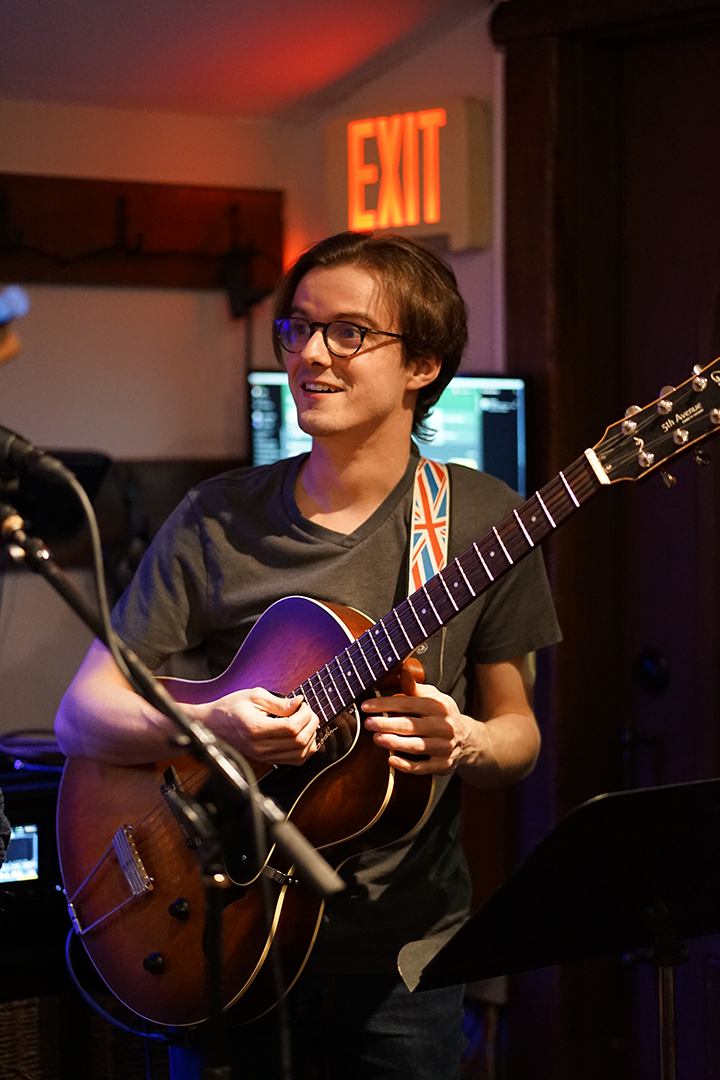 I’m with my friend Belle at Bethel’s Notch8 restaurant for their Monday night open mic. She has an easy smile and a lovely singing voice and – at the moment – a bad case of nerves.
I’m with my friend Belle at Bethel’s Notch8 restaurant for their Monday night open mic. She has an easy smile and a lovely singing voice and – at the moment – a bad case of nerves.
“Get ready,” I whisper. “You’re up next.”
Belle, a psychotherapist in her mid-thirties, has been playing and singing privately for years, but this will be her debut public performance. She suffers from acute stage fright, a condition into which her training gives her insight: “The cortex cuts off. My body freezes and my mind goes blank. It’s somewhere between panic and a panic attack,” she says.
As a former open mic host, I’ve assured Belle that stage fright is the norm. It takes a lot of guts to stand up in front of an audience, and first-time meltdowns aren’t uncommon. I chose not to relay the advice jokingly offered by Patrick Worster, the talented musician hosting this night’s open mic: “Expect to suck.”
Belle, fashionable in black, has stepped up to the mic. She’s scribbled the first line of her songs on her hand, just in case. I’ve coached her to take a good cleansing breath and then sing like she’s telling a story. If you blank, I tell her, just pause, breathe, and it will come back to you.
She performs flawlessly. The noisy room quiets and people turn to listen. After two covers and an original, Belle leaves the stage beaming to enthusiastic applause. It couldn’t have gone better.
What we think of as an open mic is said to have emerged from the Greenwich Village “hootenannies” of the 1950s, which in turn grew out of the Harlem jazz and blues jam sessions of the ‘20s and ‘30s.
“So many performers who became well-known first performed at the open mic night or what we called Hoot Night, before their careers took off,” says Robbie Woliver, who owned Greenwich Village’s iconic Folk City and captured the storied scene in his book Bringing It All Back Home. “During my time running Folk City, Suzanne Vega, Shawn Colvin, Lucinda Williams and so many others were Hoot Night regulars—as were the likes of Bob Dylan and Judy Collins, well before them.”
However, open mic nights can draw more than wannabes. Phil Ciganer, who launched the region’s first open mic at his Towne Crier Cafe in the early ‘70s, says established players often show up to try out new material. And Fred Ball, open-mic host at the late-lamented Georgetown Saloon, recalls the night Redding resident Keith Richards showed up. “But just to listen,” Ball recalls. “He didn’t accept my invitation to play.”
 John Conner, co-owner of the Sugar Hollow Taproom, on the Ridgefield-Danbury line, is on a mission to help people like Belle onto the first rung. Sugar Hollow holds open mic nights, open comedy nights and singer-songwriter showcases. Conner, a musician himself, reminds me of the old adage: “They say a live performance is worth a thousand rehearsals.” At the Towne Crier, now in Beacon, NY, Ciganer says he looks for talented open mic-ers to play showcases (featuring three to five players) or even to open for national touring acts.
John Conner, co-owner of the Sugar Hollow Taproom, on the Ridgefield-Danbury line, is on a mission to help people like Belle onto the first rung. Sugar Hollow holds open mic nights, open comedy nights and singer-songwriter showcases. Conner, a musician himself, reminds me of the old adage: “They say a live performance is worth a thousand rehearsals.” At the Towne Crier, now in Beacon, NY, Ciganer says he looks for talented open mic-ers to play showcases (featuring three to five players) or even to open for national touring acts.
On the other hand, many open mic-ers are content simply to share their talents with their local peers. The community that forms around an open mic becomes a welcoming family, whose members support and encourage each other. They’re generous and not just in spirit. When Dean Snellback, frequent open mic-er and leader of the popular Bluesyland Band, lost everything in an apartment fire last September, the local music community stepped up, donating money, lending musical gear and helping him get back on his feet.
Tony Heslin, proprietor of Bethel’s Note Kitchen & Bar and the aforementioned Notch8, marvels at the community that has sprung up around the Monday open mic he launched in 2016. “It immediately exceeded my expectations,” Heslin says, “and Monday became my favorite night of the week.”
While restaurants like the Note often stage open mics to draw business on otherwise slow weeknights, performers can struggle to be heard above the clattering plates and chattering patrons. Quieter open mics, so-called “listening rooms,” are often held in public venues, such as libraries, community centers, churches and synagogues. Here, performers are afforded rapt attention.
Belle’s next performance is at such a listening room, at Sherman’s JCC. Still glowing from her debut, she launches into Christina Aguilera’s “Genie in a Bottle.” About a minute in, she blanks. But she doesn’t panic or apologize or melt down. As I’ve coached her, she pauses, takes a breath, and after a few moments the words come back. She earns hearty applause from a sympathetic and appreciative audience.
When word gets out about a good open mic, the audience can fill with live-music lovers who know an affordable night out when they see one. But the core performers remain to be people whose day jobs haven’t snuffed out their love of playing music for others. People like Belle, like me. Maybe even like you.
In fact, you’re up next. •